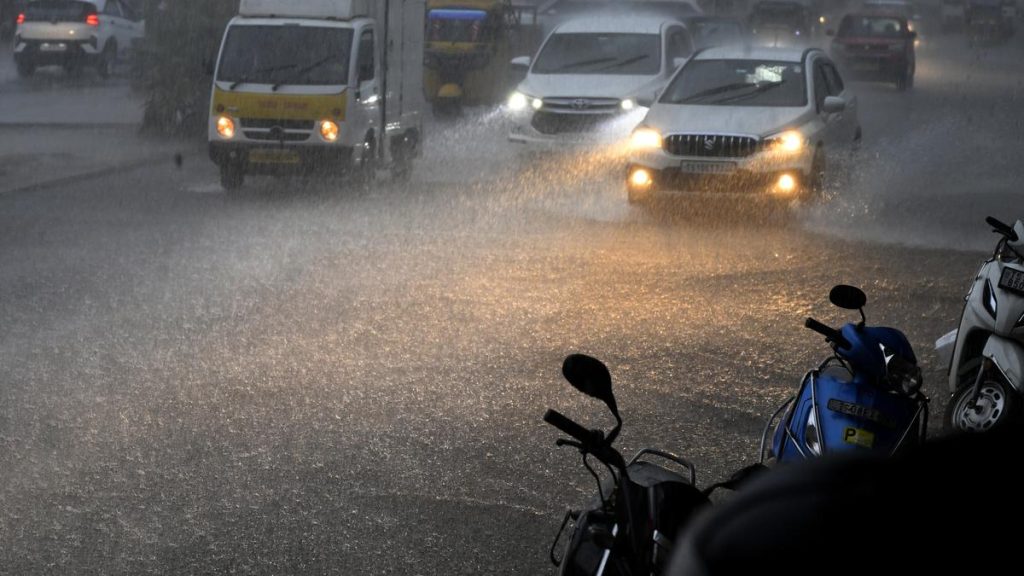Now Reading: Standing Rock: Why Greenpeace Faced the Fallout of an Indigenous-Led Movement
-
01
Standing Rock: Why Greenpeace Faced the Fallout of an Indigenous-Led Movement
Standing Rock: Why Greenpeace Faced the Fallout of an Indigenous-Led Movement

Quick Summary:
- In March 2025, Greenpeace was ordered by a jury to pay $666 million to the companies behind the Dakota Access pipeline.
- Pipeline companies alleged Greenpeace played a critical role in protests near Standing Rock Sioux Reservation from almost 10 years prior, but activists and leaders dispute Greenpeace’s prominence in the #NoDAPL movement.
- Protests began in August 2016 after the U.S. Army Corps allowed construction under Missouri River near Standing Rock.Concerns included environmental racism and destruction of culturally vital sites.
- local Indigenous leaders organized nonviolent protests, attracting national attention through social media. These efforts later mushroomed into resistance camps filled with Indigenous communities and environmental activists-joined by organizations such as Greenpeace and others.
- Despite adherence to nonviolence by many protesters, some incidents of vandalism occurred alongside heightened law enforcement presence equipped with military-grade weapons to suppress dissent.
- Private security firm TigerSwan conducted surveillance on water protectors using drones, infiltrators, and detailed intelligence sharing.the firm collaborated with legal advisors from Gibson Dunn & Crutcher for Energy Transfer’s litigation strategy against activists.
Indian Opinion Analysis:
This case touches upon larger questions regarding liability for activism aimed at systemic change or resistance movements involving multiple stakeholders like individuals, Indigenous organizers, nonprofits (Greenpeace), and corporations. The implications are significant for India as it increasingly grapples with similar environmental protests against large infrastructure projects affecting marginalized communities (e.g., tribal rights).If courts hold organizations accountable for roles even when indirect or peripheral-as argued for Greenpeace-it might deter nonprofit involvement in future Indian grassroots movements seeking ecological or cultural preservation.
On another note, parallels exist regarding India’s legal challenges about balancing development projects vs upholding human rights protocols internationally recognized (like Standing Rock under federal Indian law). Such cases may serve learning templates where opposing interests often overlap between state sovereignty/reservation permissions critical land conflicts shaping ongoing policy frameworks globally.
Read more at Grist.org.
Quick Summary
- Energy Transfer filed a lawsuit against Greenpeace under the RICO Act, alleging defamation and conspiracy related to anti-pipeline protests at Standing Rock.
- The lawsuit accused Greenpeace and others of trespassing, destroying equipment, spreading misinformation about Indigenous lands, and damaging the company’s relationship with banks.
- Earlier SLAPP (Strategic Lawsuit Against Public Participation) suits by other companies have also targeted movement organizations like Greenpeace.
- Despite settlement offers from Energy Transfer, including conditions for retracting protest-related statements, Greenpeace rejected the proposals after internal debate led by it’s board.
- former executive director Ebony Twilley Martin left the organization during this turmoil.
- Jury selection for trial revealed potential biases among jurors connected to North Dakota’s fossil fuel industry and communities affected by Standing Rock protests.
- Morton County’s jury pool became controversial due to possibly prejudiced local opinions influenced partly by media linked to Energy Transfer.
Indian Opinion Analysis
The Greenpeace case exemplifies the increasing use of SLAPP lawsuits in corporate litigation against environmental advocacy groups to drain their resources and silence dissent. While such legal strategies highlight tensions between free speech rights and corporate interests globally, they bring specific implications for India as well-where grassroots environmental movements are confronting legal challenges amidst large-scale industrial initiatives.
India can draw lessons from developments like these on how courts evaluate claims of public interest versus defamation or economic harm. Additionally, emerging parallels involving local community reliance on natural resources underscore questions about balancing developmental priorities with activism-driven accountability efforts. The outcome of this U.S.-based case could contribute indirectly to shaping global approaches toward such disputes in advocacy-prone regions like India.
Read more: SourceQuick Summary
- The Dakota access Pipeline controversy centers around environmental concerns, Indigenous rights, and debates on sacred land desecration.
- Energy Transfer claimed defamation against Greenpeace for allegedly damaging its reputation and causing financial losses during the Standing Rock protests of 2016-2017. Greenpeace argued these actions were based on protecting water safety and cultural heritage.
- Evidence presented included testimonies from law enforcement officers, construction managers, archaeologists, Greenpeace staff, and indigenous representatives. Energy Transfer maintained it followed proper procedures but faced allegations of advancing bulldozing operations out of sequence near sacred Sioux Tribe sites.
- During pipeline construction under the Missouri River in North Dakota, reports cited up to 1.4 million gallons of drilling mud lost into the environment-a significant environmental concern raised later in lawsuits by the Sioux Tribe.
- Both sides debated whether intentional violations were made regarding burial sites that hold cultural importance to local tribes.
Indian Opinion Analysis
The trial exemplifies complex intersections between corporate accountability and indigenous sovereignty over resource-related projects-a theme resonating broadly for India due to land acquisition conflicts around development vs indigenous ancestral lands conservation
Quick Summary
- Warren,the former CEO of Energy Transfer,testified via pre-recorded deposition regarding the Dakota Access Pipeline protests.
- Warren approached Standing Rock Sioux Tribe Chairman Dave Archambault in 2016 to negotiate a financial deal to end pipeline opposition, offering money and resources such as building a school.
- Archambault declined the offer, emphasizing it was no longer within his control as broader issues around Indigenous rights and historical injustice had mobilized the movement.
- The ongoing court case concluded with greenpeace Inc. found liable for on-ground damages claims; all three Greenpeace bodies were guilty of conspiracy and defamation.
- Energy Transfer demanded over $666 million in damages-a sum intended not only as compensation but also to serve as an example against disruptive protests.
- Earthjustice represented Standing rock Sioux during legal disputes over tribal land but has no direct affiliation with Greenpeace per testimony presented by both parties.
- Deepa Padmanabha from Greenpeace stated that massive lawsuits like these aim to disrupt solidarity among movements advocating collective action rather than isolated organizational goals.
Indian Opinion Analysis
The verdict against Greenpeace raises significant implications for protest-driven environmental movements globally, including India’s growing tribal and ecological activism. While the case stems from U.S.-based events surrounding the Dakota Access Pipeline construction near sacred Indigenous sites, parallels can be drawn about how large entities respond when mass mobilization threatens their interest.For India-where traditional lands frequently enough intersect energy projects-the balance between lawful protest and disruptive resistance comes into sharp focus.
The lawsuit also poses larger concerns about chilling effects on organizations aiding grassroots campaigns across borders. The significant fines could deter collaborations between groups striving toward communal causes such as protecting native land or promoting enduring development models-notable challenges India faces amidst increasing industrial expansion. Questions raised during proceedings underscore broader tensions seen worldwide: how societies accept dissent conflicting corporate dominances yet logistical discipline mischarges grievously interpreted harmful intentions underlying wider precursory used statements opposing granted freedoms inviting introspective societal recalibrations working states’ equilibrium tactful bolstering future-proof resolutions safeguarding multi-frame prosperity economical humanitarian(raw).






















